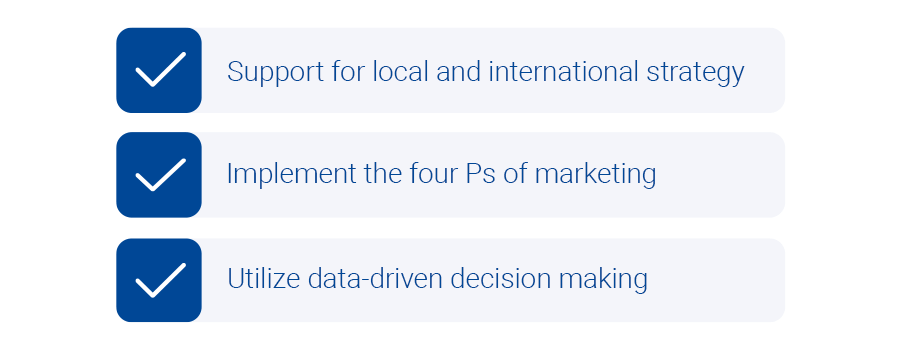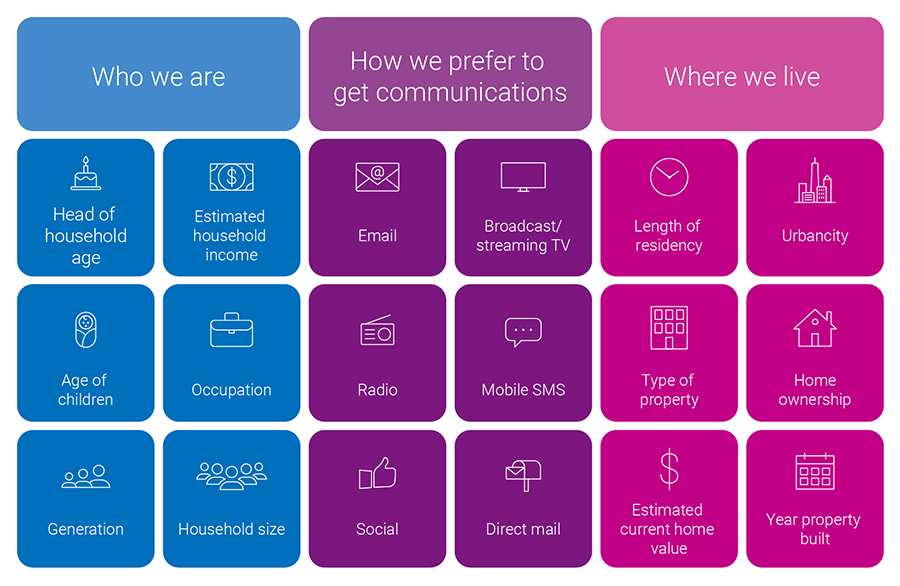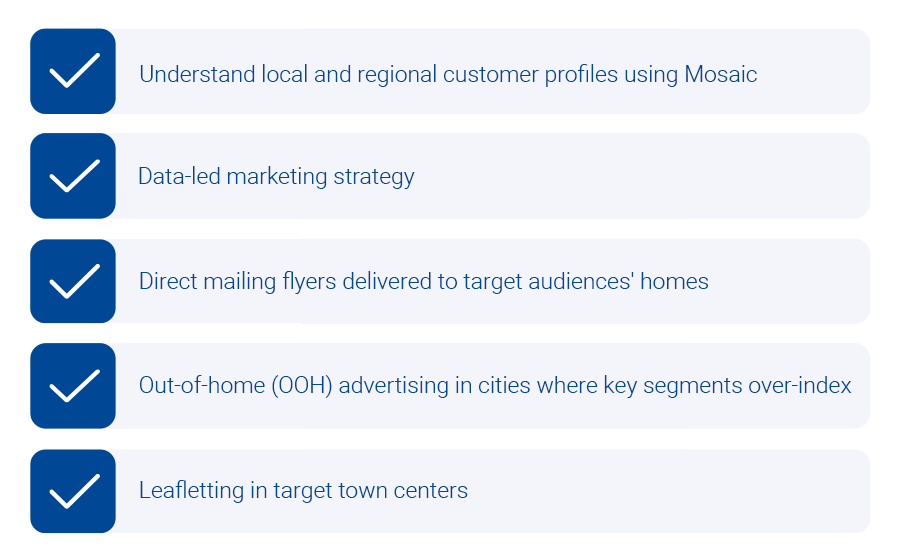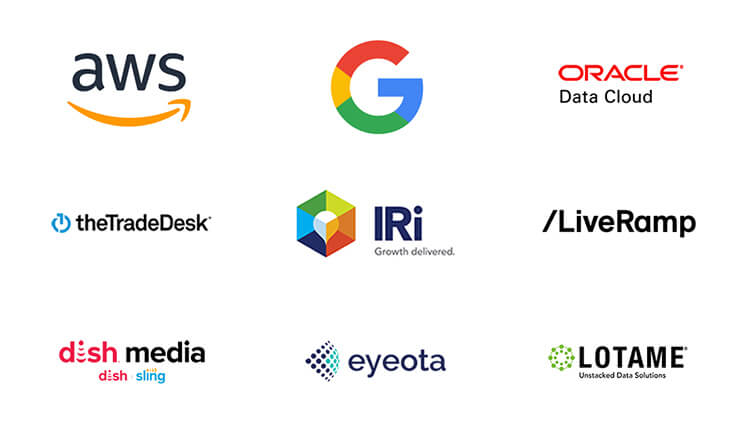Marketing with your target customer segment in mind
Learn how to create a marketing strategy for your target audience
Customer segmentation divides consumers into groups based on shared characteristics, behaviors, and needs. When you understand what consumers want, you can put their interests at the center of your content to produce customized, hyper-targeted products and messages. The personalized experiences you provide by having a deeper understanding of your target customer segment builds brand loyalty — the livelihood of customer retention.
Demographic characteristics include age, gender, education, income, and religion.
When segmenting based on psychographics, groups are created based on shared characteristics like attitudes, lifestyles, and interests.
In value-based segmentation, customers are divided into groups based on their revenue and the cost of building and maintaining a relationship with them.
Geographics refers to where people live, work, or spend large amounts of time.
How people interact with brands or products determines behavior characteristics. This may include how they engage with brands or how they use social media.
Needs-based segmentation involves grouping consumers based on shared needs or problems.
Target marketing focuses on people most likely to purchase your product or service. Segmentation looks at your entire target market and divides consumers into more specific groups based on shared characteristics, needs, or behaviors.
During target market segmentation, analyze your products or services to determine what problems they can solve and who they appeal to. You can create segments based on any shared characteristics of the people who would be interested in your offerings. You may end up with more than one segment, which can vary depending on the product or service.
Once you have identified your segments, analyze them to ensure they fit the following criteria.
Although segments are smaller groups from your target market, segments should be large enough to be cost-effective.
To ensure effective and highly targeted marketing, ensure your target segment is unique compared to your other segments.
Segments should be accessible, meaning you can reach them with your planned marketing strategies.
Keep needs-based segment data in mind when segmenting to ensure your products or services can meet their needs.
Evaluate your segment value regarding consumer revenue and the cost of building relationships with them.
In product strategy, the goal is to get the most value from customers. You can achieve this by making the most expensive products available or offering them at different prices.
By using third-party data, you can gain an accurate picture of your market segment, competition, and potential customers. Third-party data can help you determine what your ads, messaging, and tone should look like to appeal to target segments.
Consider both current and future competition in the segment. Although large segments can be profitable, they also attract more competition which can negatively affect margins.
The key to reaching your target customers is being patient and taking the time you need for your marketing to work. Create a realistic timeline with benchmarks to track progress.
The number of target customer segments you have should depend on your products, services, audience reach, competition, and other data. Your prioritization capabilities are also an essential factor. Many companies find that they can manage about 6-8 segments at a time. Depending on your marketing team and how many targetable groupings you find in your market, you can have fewer or more segments.
What does a target customer segmentation strategy look like? Let’s review how we partnered with Swiss Sense, a Dutch family-owned retail business, to deploy an actionable consumer segmentation strategy.
Swiss Sense sought to increase their market presence by analyzing customer data in the Netherlands to gain insights into their ideal customer profiles. They planned to apply these learnings to their strategy in other markets, using data to inform tactics based on market maturity and penetration. Their focus was on supporting both local and international strategy, implementing the four Ps of marketing (product, price, place, and promotion), and using data-driven decision making.

Swiss Sense initially aimed to create persona-based customer segments. After collaborating with our consulting team, they transitioned to using Mosaic.
By combining global and in-country Mosaic profiles, they found greater actionable insights that supported their objectives. Swiss Sense chose Experian because we deliver a consistent approach across all countries they operate in.
In addition to providing data and analytics consulting, we created a custom Tableau dashboard to deliver Mosaic data and customer insights directly to end-users, helping drive adoption and implementation of the segmentation strategy.
Experian’s Mosaic is a household-based consumer lifestyle segmentation system that classifies all U.S. households and neighborhoods into 71 unique types and 19 overarching groups, providing a 360-degree view of consumers’ choices, preferences, and habits.
Through Mosaic, we provide marketers with the most accurate and comprehensive view of their customers, prospects, and markets. Using Mosaic lifestyle segmentation, you can anticipate the behavior, attitudes, and preferences of your best customers to deliver the right message in the right place at the right time.

Using our Tableau dashboard and Mosaic data, Swiss Sense created an overview of each customer type to provide a consistent segmentation view across their customer base. They also used more granular Mosaic data in each country to gain a deeper understanding of their customers in each region. Swiss Sense’s content marketing team used our segmentation portal and Mosaic data to drive customer-targeted content, suggest relevant imagery, and guide tone of voice.
By identifying the main growth segments from their customer profiling using Mosaic data, Swiss Sense identified which regions and cities had a higher concentration of their ideal customer types and ran offline media campaigns to increase foot traffic and brand awareness. The Mosaic data was also used to evaluate the outcomes of marketing activity by combining it with brand tracking data to understand campaign effectiveness.
In addition to data-driven advertising, Swiss Sense also used Mosaic profiles to make product recommendations for customers. They created curated bundles and other personalized product offerings for customers segmented by Mosaic groups.

Defining target customer segments is an integral part of your marketing strategy because it helps you form ideas based on what your target audience wants. A better understanding of your target audience lets you create tailored marketing campaigns that lead to increased sales and brand loyalty, more efficient marketing spend, and higher ROI.
We help brands like yours develop effective marketing strategies that help them connect meaningfully with customers. Using our tools, you can better target your audience by getting to know them through target market segmentation. Our data-driven consumer segmentation strategies will help you communicate more effectively with your customers, resulting in better customer relationships.
Connect with us today to learn more about how we can help you with your target market segmentation strategy.
We can help you create marketing strategies catered to the specific preferences and behaviors of your current and prospective customers. We specialize in helping brands discover data-driven insights to make an everlasting impact on consumers.
Our data and identity products and services can help you learn more about customers and target audiences, leverage data resources, improve targeted marketing, create personalized campaigns, and optimize marketing strategies.
With us, you’ll understand your consumers better, make more effective data-informed decisions, and increase your customer base for bigger revenue.

This site is protected by reCAPTCHA and the Google Privacy Policy and Terms of Service apply.